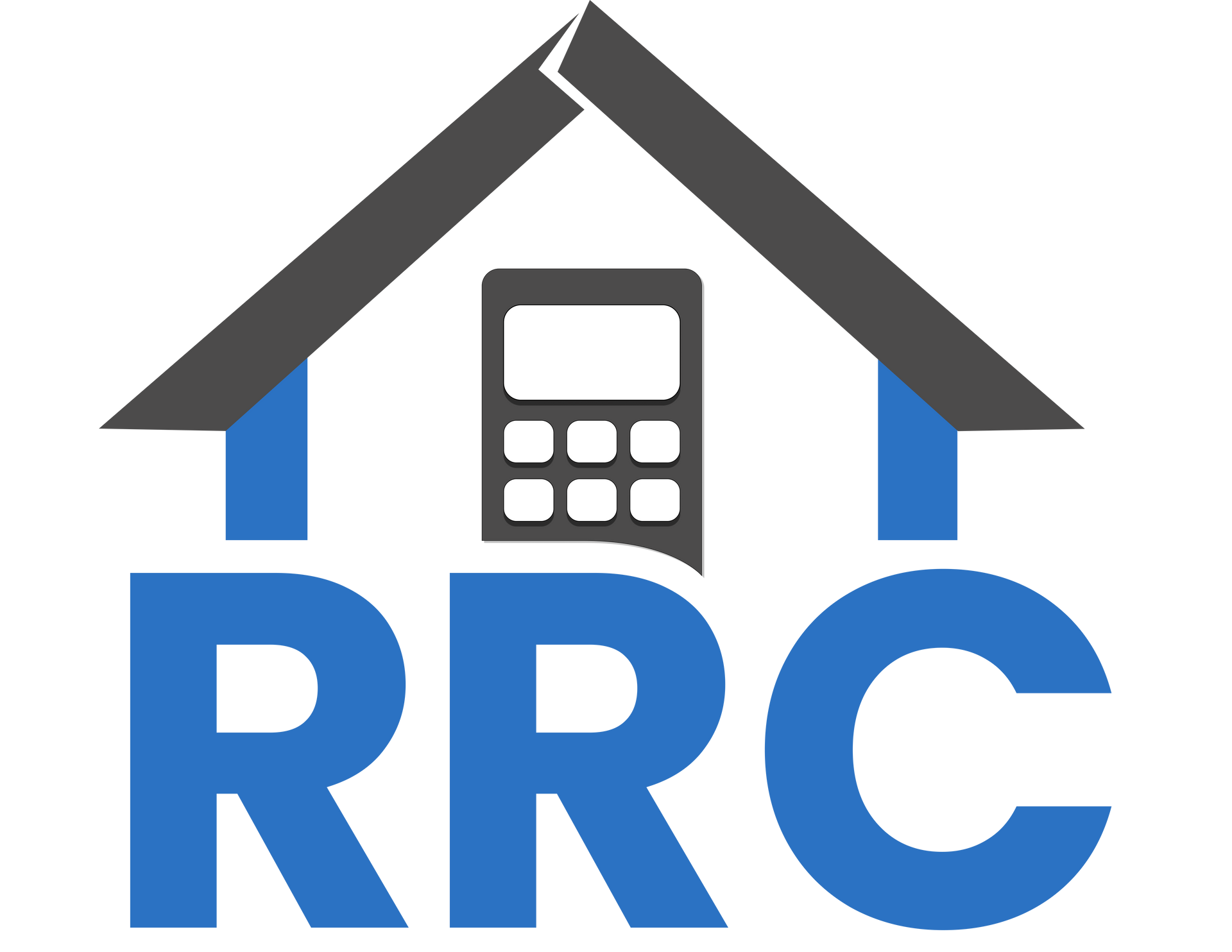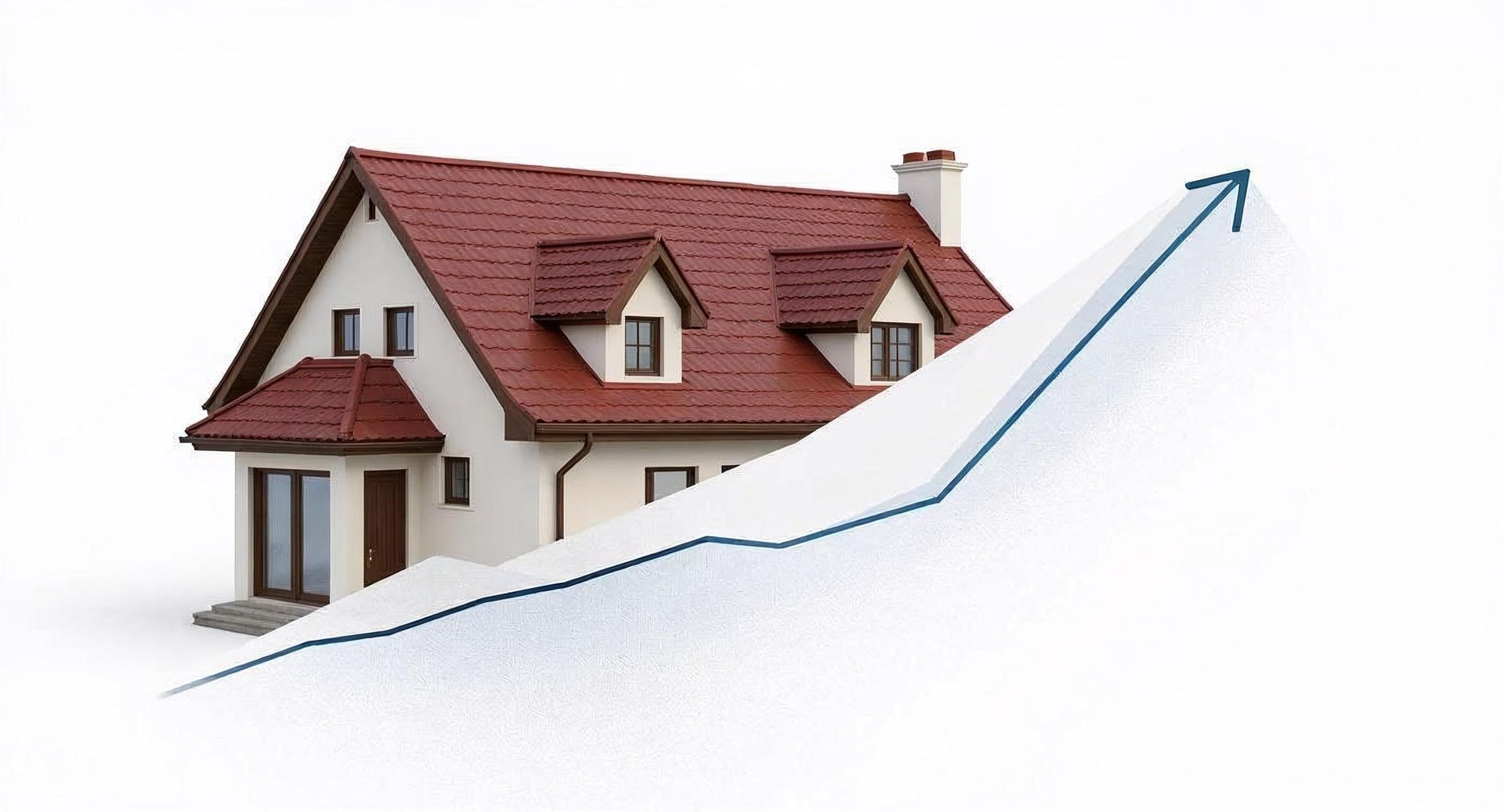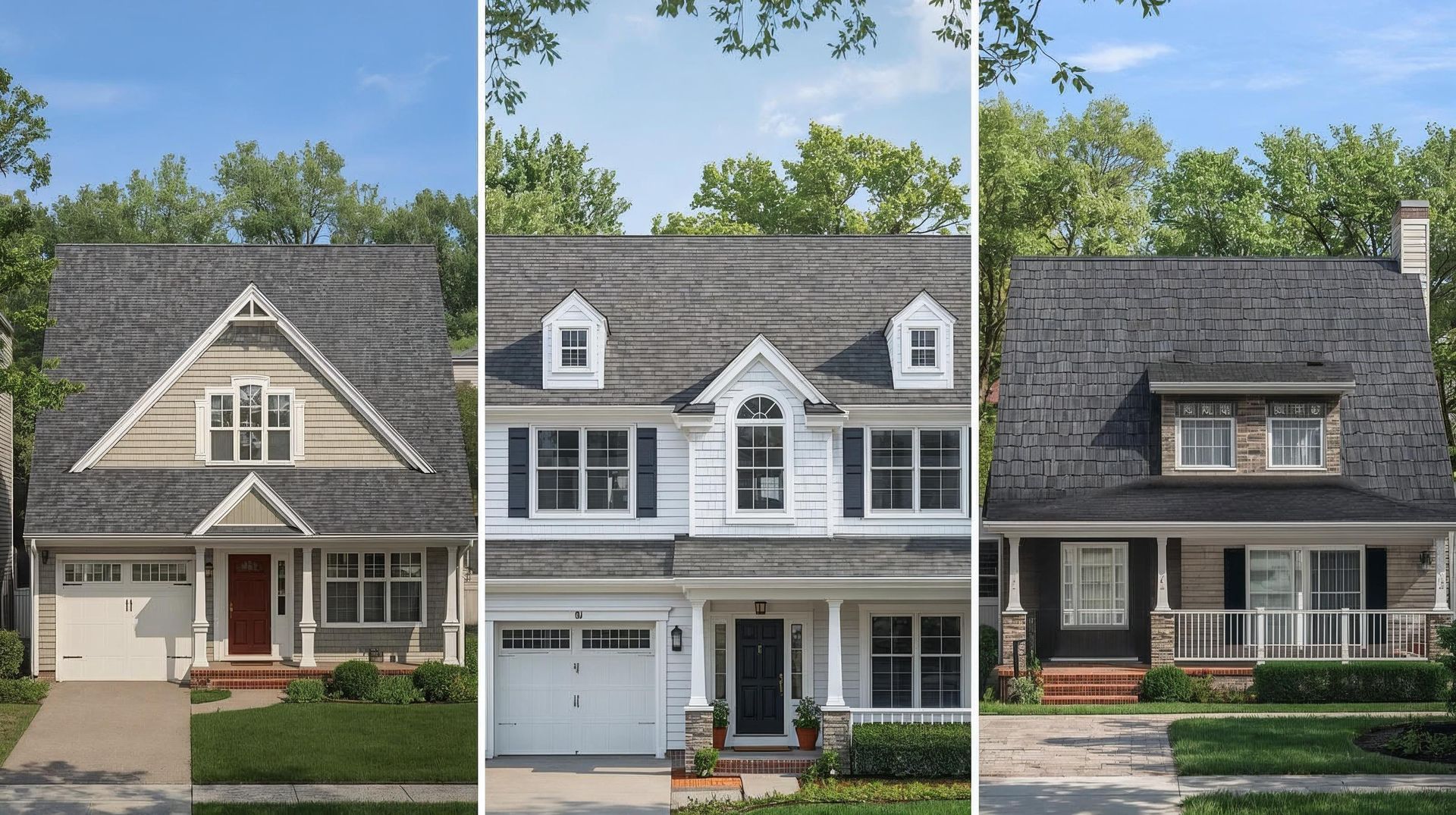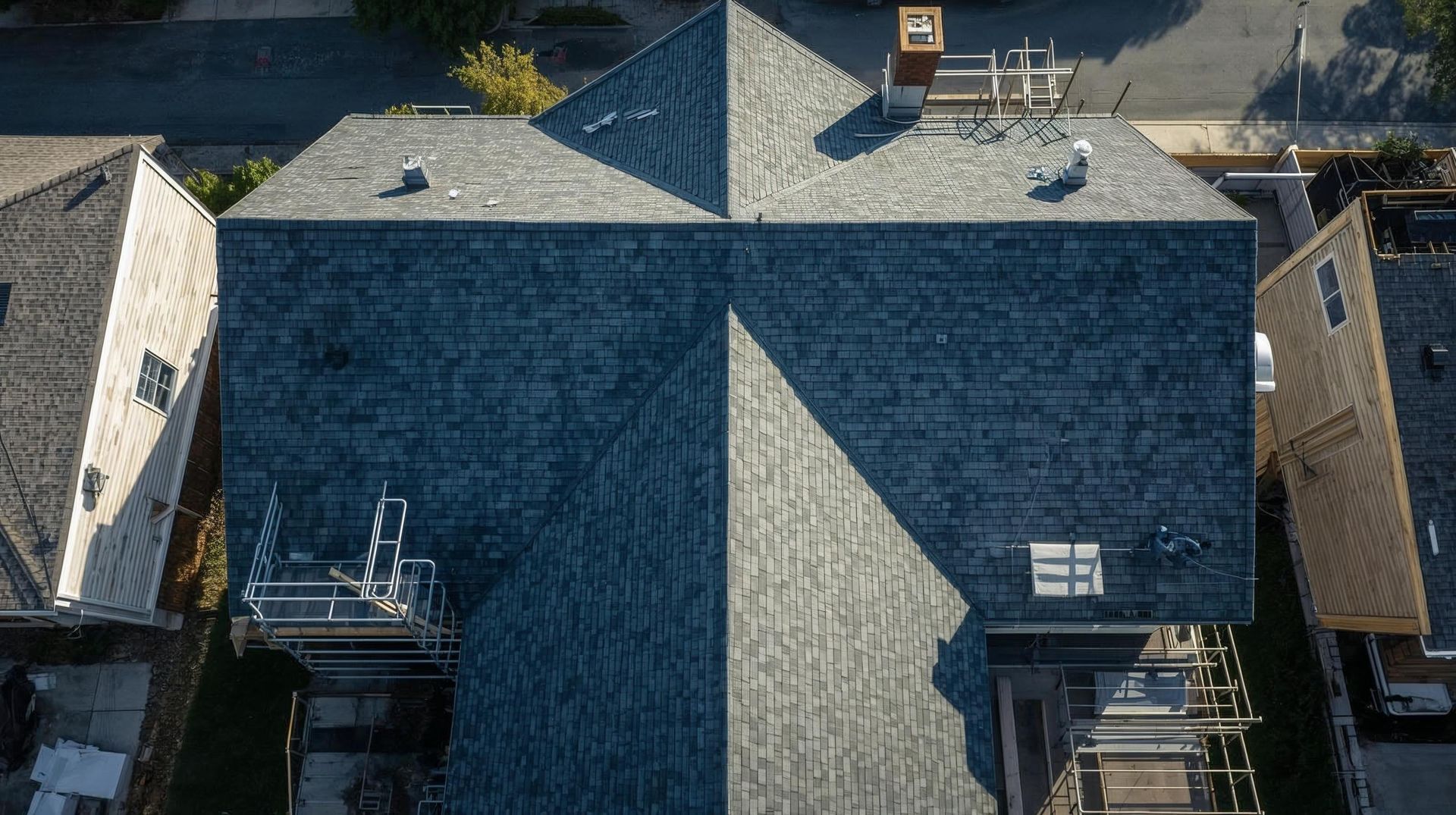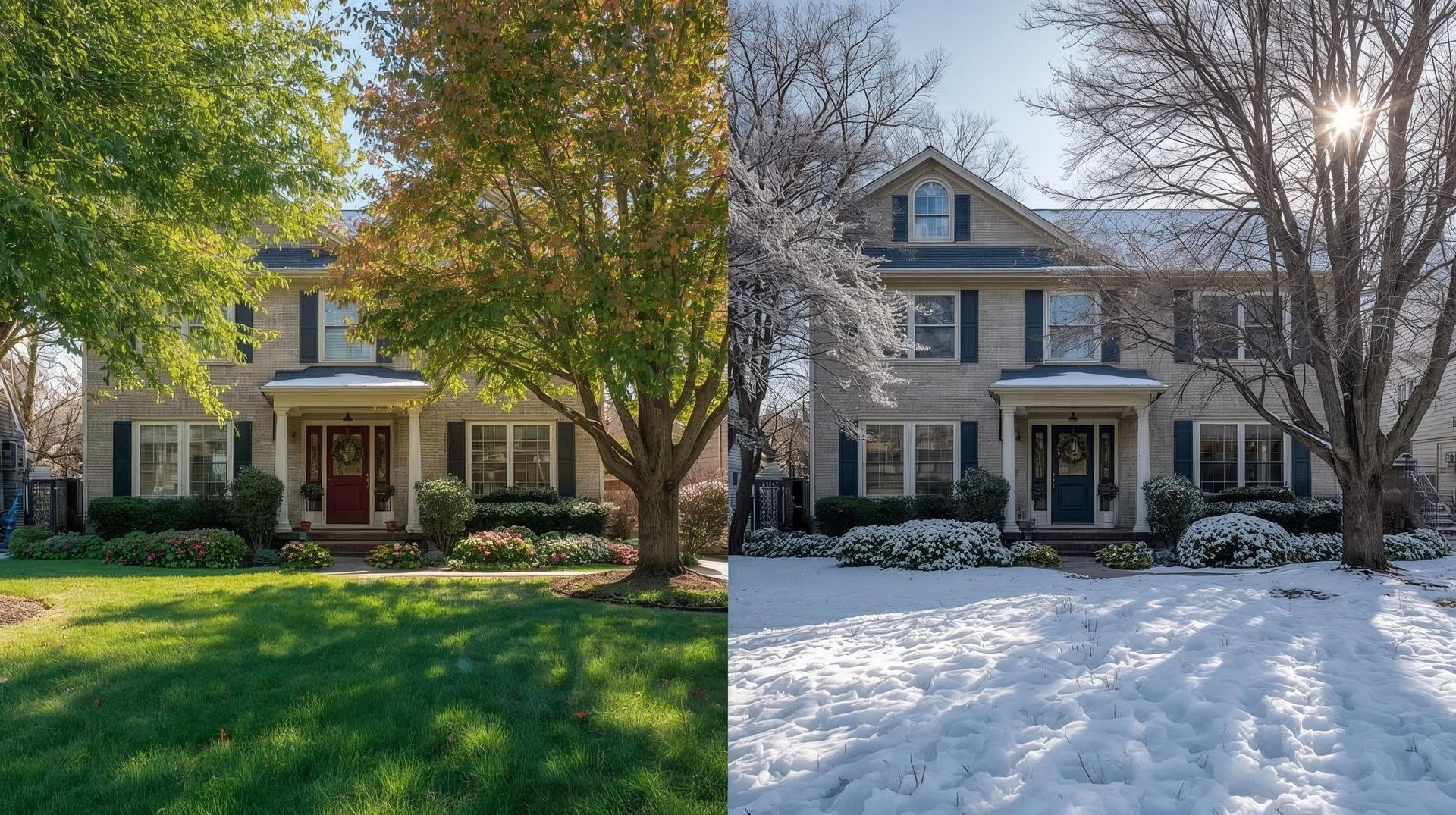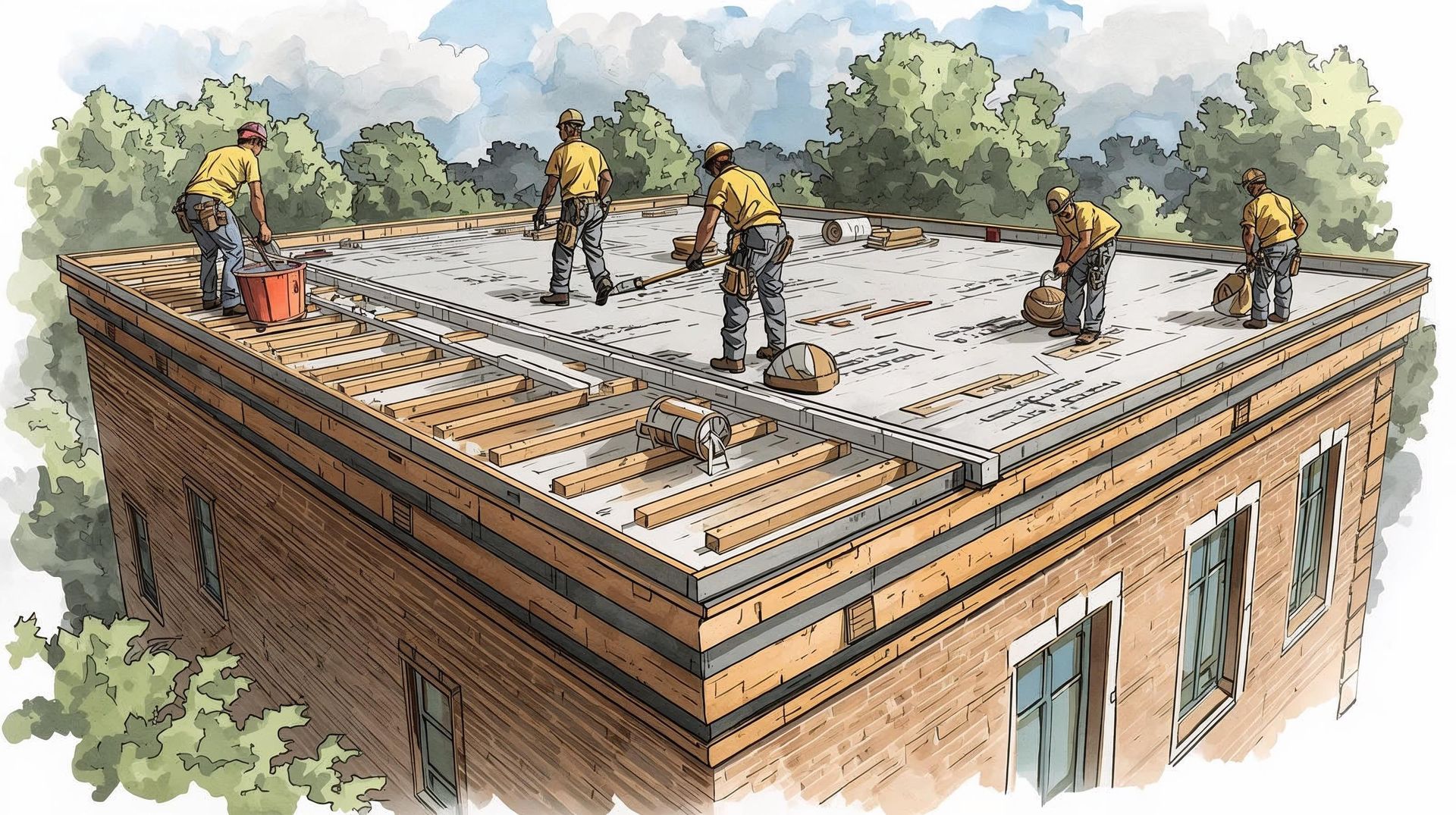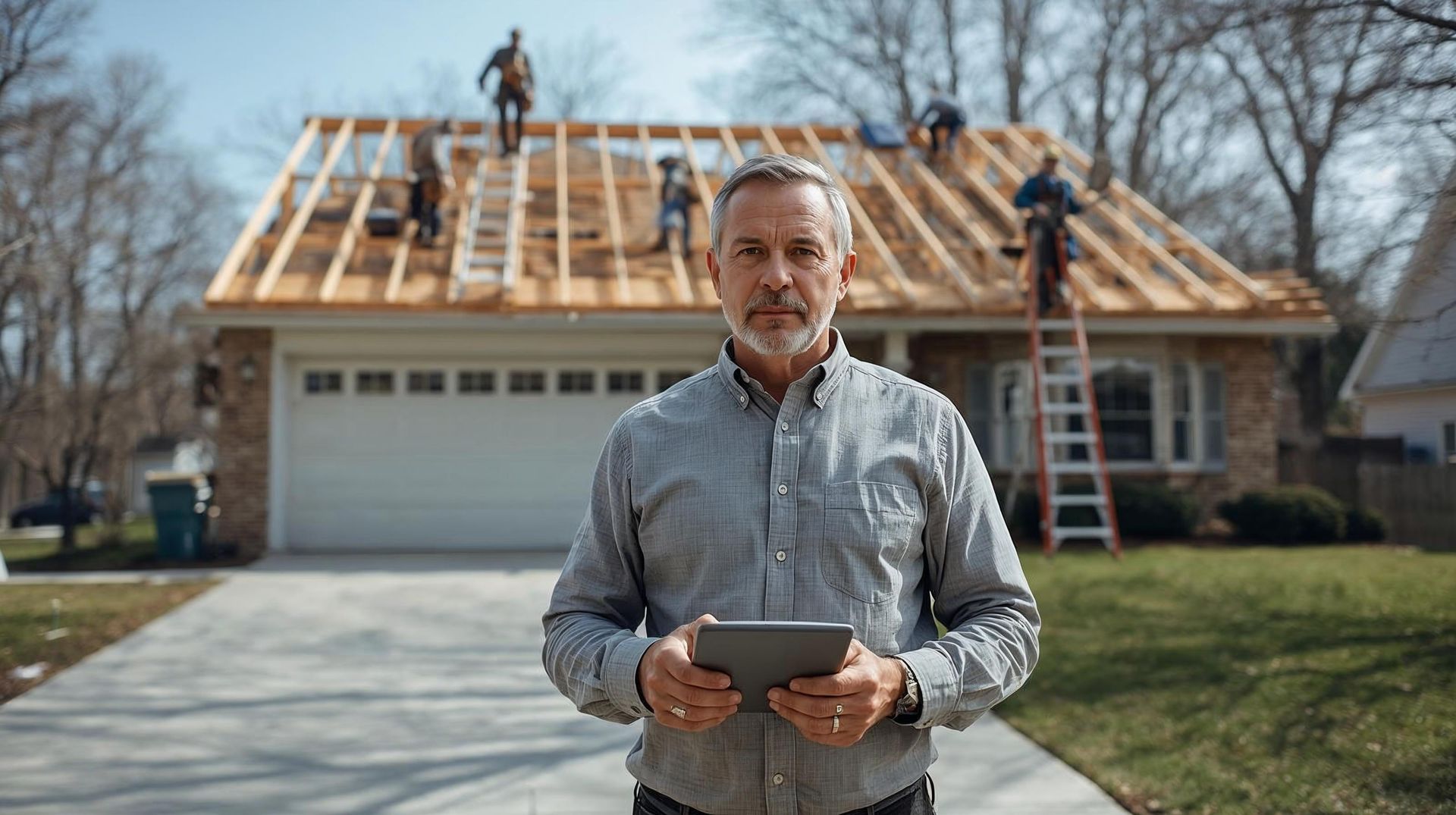Are Metal Roofs Worth It? A Detailed Cost vs. Benefit Analysis
- Metal roofing systems cost more per square foot upfront than asphalt shingle roofs, but last two to three times longer.
- They offer energy-efficient performance and strong resistance against extreme weather.
- Potential drawbacks include a higher initial installation cost and the need for specialized labor, making labor costs higher than with shingles.
- For homeowners seeking long-term savings and resale value, a standing seam metal roof or a similar type is often worth it.
How Much Do Metal Roofs Cost Compared to Shingle Roofs?
The phrase "Metal Roofs are expensive" gets thrown around a lot. While that's partly true, it's not the whole story. The metal roof cost has two sides: the higher upfront cost and the savings you reap later from durability and energy efficiency.
When comparing metal and shingle roofs, it’s important to look beyond just the sticker price. Let’s break it down step by step.
1. Upfront Costs
If you’re deciding based on initial price, Asphalt Shingles are the clear winner. But real costs vary depending on material choice, roof size, and roof complexity.
- Metal Roof Installation: $8–$16 per square foot (and sometimes more for premium standing seam roofs).
- Shingles cost: Asphalt shingles typically cost $3–$6 per square foot, making them cheaper initially. Widely available and easier to install, so labor expenses are lower.
- Composite shingle cost: Mid-range between basic asphalt shingles and premium luxury shingles, appealing to homeowners wanting affordability with improved durability.
- Roof Pitch & Roof Complexity: Both factors can raise the bill significantly. Even when comparing the same roof size, a complex or steep roof design drives up installation costs, especially for metal roofing.
- Labor: Installation for metal roofs requires special expertise, often making labor costs higher compared to traditional shingle roofs. Roof pitch and complexity can further raise the bill.
If your main concern is budget, you may also want to explore: What’s the Cheapest Way to Replace a Roof?
2. Long-Term Savings
Upfront costs only tell half the story. Over time, metal roofs often prove more cost-effective than asphalt shingles due to durability, low maintenance, and energy performance.
- While a shingle roof cost looks better upfront, asphalt shingles tend to last only 15–20 years and often need more frequent repairs.
In contrast, a properly maintained metal roof can last 40–70 years with minimal maintenance cost.
- Energy efficiency also plays a role; metal roofing materials reflect sunlight, helping homeowners save on cooling bills in hot climates and lowering heating costs in winter.
- Homes with metal roofs often attract eco-conscious buyers and deliver stronger resale appeal. Meanwhile, Shingle roofs offer less resale value since buyers know they’ll face a replacement sooner.
Since every home has different variables like roof size, slope, and material choice, using a Roof Replacement Cost Calculator can give you a clearer sense of lifetime costs.
When it comes to Metal Roof Cost vs Asphalt Shingles, the choice depends on your priorities. If you need an affordable, short-term roofing solution, shingles cost less upfront and are widely available. But if you’re planning to stay in your home for the long run, a metal roof, despite its higher installation cost and labor requirements, often proves the smarter investment, due to its durability, lower maintenance cost, and energy savings.
Top Benefits of Metal Roofs for Homes and Industrial Buildings
Beyond the dollar signs, a metal roof comes packed with advantages that homeowners appreciate every day, from durability in extreme weather to energy savings and even added curb appeal.
1. Durability and Weather Resistance
- Withstand high winds, hail, and extreme weather.
- Fire-resistant and less prone to frequent repairs than shingle roofs.
- Ideal for residential roofing projects in storm-prone regions and even industrial buildings where durability is critical.
- For homeowners balancing durability and maintenance cost, a cost comparison against shingles, especially wood shingles, often tilts the scale in favor of metal.
2. Energy Efficiency
- Unlike asphalt roofing, which shingles absorb heat, metal roof types reflect solar energy.
- Creates a more energy-efficient home, reducing heating costs and cooling expenses.
3. Environmental Impact
- Many metal roofing systems are made from recycled materials and can be recycled again.
- Asphalt shingles often end up in landfills after a roof replacement, making them less eco-friendly compared to other materials (slate or clay tiles).
4. Aesthetic Options
- Metal roofing materials include sleek standing seam, rustic exposed fastener roof, and modern steel roof styles.
- Wide range of colors and finishes, rivaling dimensional shingles, luxury shingles, and even slate shingles in curb appeal.
Metal Roof Disadvantages Homeowners Should Consider
As impressive as a metal roof sounds on paper, it's not the perfect fit for every homeowner. Just like any other roofing material, Metal roofs come with their own set of challenges, from a higher upfront cost to noise concerns and installation quirks that you'll want to weigh carefully before making a decision.
Let's have a look at these drawbacks more closely:
1. Higher Initial Investment
One of the biggest hurdles for homeowners is the higher upfront cost.
- A Metal roof installation can run two to three times the price of a traditional asphalt shingle roof, especially for premium systems like a standing seam metal roof.
- While this investment can pay off in the long run through less maintenance and fewer frequent repairs, the initial cost can be a dealbreaker for homeowners working with a tighter budget.
2. Noise Concerns
If you've ever been in a metal building during heavy rain, you probably know that the sound can get noisy. The same concern applies to metal roofing systems.
- During storms, the drumming of rain or hail on a steel roof can be louder than that of shingle roofs. That said, this issue is often exaggerated. With proper installation and adequate attic insulation, the noise level can be brought down to match that of asphalt shingles.
Still, it's worth considering if you live in areas with frequent heavy rain or hailstorms.
3. Expansion and Contraction Issues
Another quirk of metal is its tendency to expand and contract with extreme weather changes.
- In hot climates, metal roof types can shift slightly as temperatures rise and fall. Over time, this can cause stress on fasteners, especially with exposed fastener roofs.
- A skilled roofing contractor will account for this by using the right techniques and materials during installation, but it's still something to keep in mind.
4. Specialized Installation
Unlike Asphalt shingles, which most roofing crews can install, a metal roof often requires a professional roofer with specialized skills.
- If you live in an area with fewer experienced roofing contractors, installation could be more expensive or harder to schedule.
- Improper installation may also lead to structural problems or reduce the roof's lifespan, making it critical to hire someone who knows their craft.
5. Aesthetic Preferences
While many homeowners love the sleek look of a standing seam metal roof or the rustic appeal of exposed fastener systems, others feel a metal roof doesn't match the style of their neighbourhood. If curb appeal and blending with surrounding houses are important, you'll want to weigh whether the look of metal complements your property or not.
Side-by-Side Comparison: Metal Roof vs Asphalt Shingles
For most homeowners, the real decision isn't just "metal roof or not," it's Metal Roof vs Asphalt Shingles. Both have their place, but their differences in cost, lifespan, and maintenance can make one far better suited to your needs. Let's take a closer look.
| Factors | Metal Roof | Asphalt Shingles |
|---|---|---|
| Upfront Cost | Higher initial investment (2-3x Asphalt cost) | More affordable and budget-friendly |
| Lifespan | 40-70 years with proper installation | 15-30 years, depending on climate and maintenance |
| Durability | Highly resistant to wind, hail, fire, and extreme weather. | Prone to damage from hail, wind, and heavy storms |
| Maintenance | Low maintenance; occasional inspections | Requires more frequent repairs and replacements |
| Energy Efficiency | Reflects heat, reducing cooling costs in hot climates | Absorbs heat, raising energy bills in warm regions |
| Environmental Impact | Often made from recycled materials and fully recyclable | Petroleum-based; ends up in landfills after replacement |
| Aesthetic Options | Wide variety of colors, finishes, and modern/rustic styles | Traditional look; fewer customization options |
| Noise Levels | Louder during rain or hail unless well insulated | Naturally quieter due to material density |
| Installation | Requires specialized contactors; longer installation time | Asphalt Shingles installation is easier and faster for the most recent roofing crews |
| Resale Value | Can boost home value and appeal to eco-conscious buyers | Adds less resale value compared to metal roofing |
| Use Cases | Ideal for residential roofing & industrial buildings | Best for short-term homeowners |
Metal roofs are an investment in longevity, energy savings, and durability, making them ideal for long-term homeowners. Meanwhile, Asphalt Shingles remains the go-to for homeowners who want an affordable, traditional, and widely available option, especially if they don't plan to stay in the home for decades.
Read Cost of a New Roof Per Square Foot to get a full breakdown of different Roofing Material Costs & their Lifespans Per Square Foot.
Final Verdict: Is a Metal Roof Worth the Cost?
So, are metal roofs worth it? If you're looking at your roofing project purely from an initial cost perspective, Asphalt Shingles or Architectural Shingles are undeniably more affordable. But if you factor in long-term savings, minimal maintenance, and the ability to withstand extreme weather, a metal roof is often the smarter, more cost-effective investment.
Factoring in the same roof size, roof complexity, and available roofing options ensures you’re making a smart investment rather than just a quick fix. And remember, the right roofing contractor can make all the difference in ensuring your new roof is installed correctly, whether you choose metal or shingles.
Your home deserves the right protection, and our team will make sure you invest wisely.
Are metal roofs noisy when it rains?
Not necessarily. With proper insulation, noise concerns are minimal.
Do metal roofs require special maintenance?
No, they are generally low maintenance, requiring only routine inspections.
Can metal roofs handle hot climates?
Yes. Metal roofs are more energy efficient because they reflect solar heat, unlike Asphalt Shingles, which absorb heat.
Will a metal roof increase resale value?
Yes. Homes with metal roofing systems often have higher resale value thanks to durability and energy-efficient performance.
